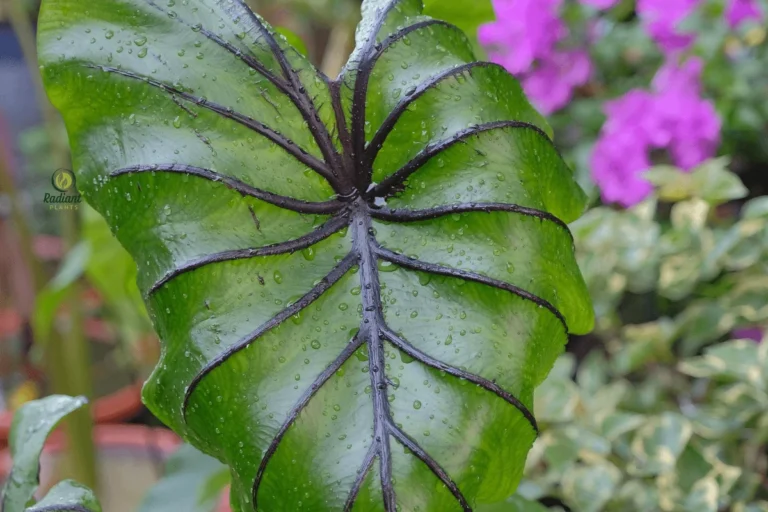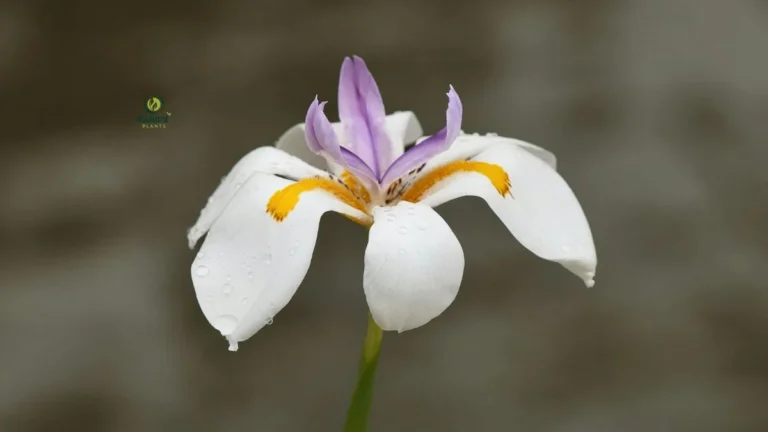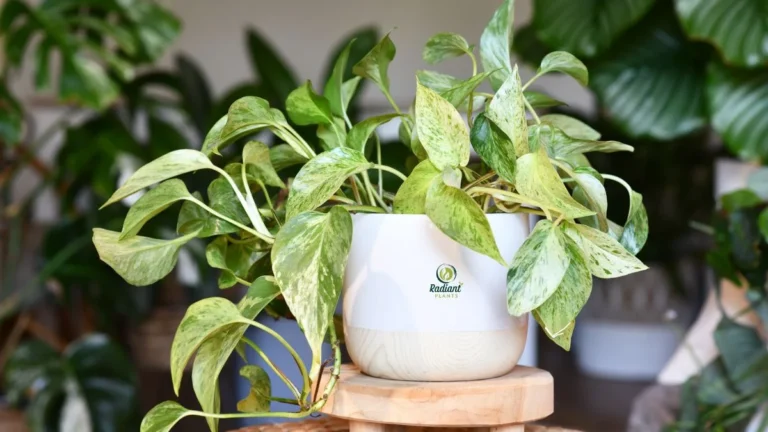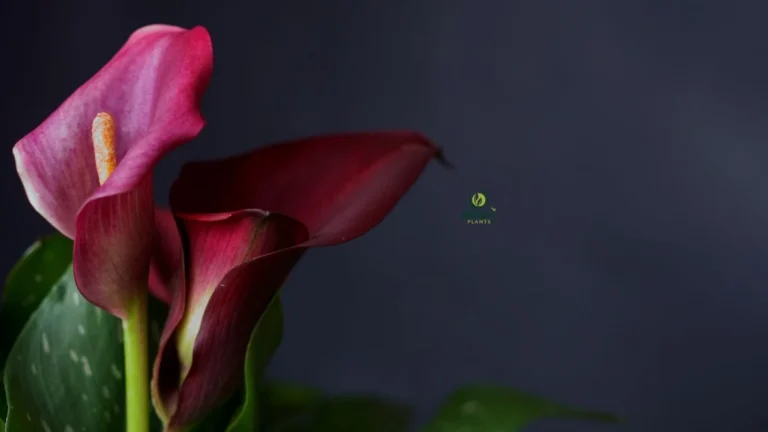How to Grow and Care for Elephant Ears
Have you ever found yourself yearning for a touch of the exotic in your backyard sanctuary? Picture stepping outside your door into a verdant paradise, where massive, velvety leaves sway gently in the breeze, creating a canopy of natural splendor. That’s the transformative magic elephant ear plants bring to ordinary gardens.
I’ll never forget stumbling upon my first elephant ears display at a botanical garden in Florida. Standing beneath those magnificent, oversized leaves, I felt transported to a distant jungle, despite being just steps away from the parking lot. That moment sparked a lifelong fascination with these botanical wonders.
Whether you’re a seasoned gardener or just beginning your green thumb journey, this comprehensive guide will equip you with everything needed to cultivate thriving elephant ears that become the envy of your neighborhood.
Table of Contents
Understanding Elephant Ears Plants



What Are Elephant Ears?
Elephant ears encompass several tropical and subtropical perennial plants celebrated for their dramatic, heart-shaped foliage reminiscent of their namesake animal’s ears. These botanical marvels originate primarily from Southeast Asia, though some varieties hail from tropical America. Their botanical lineage traces back millions of years, making them living representatives of ancient plant evolution.
Three distinct genera comprise what gardeners commonly call “elephant ears”:
- Colocasia: Often referred to as taro, these moisture-loving varieties typically feature leaves that point downward. Their tubers are cultivated as important food crops in many tropical regions.
- Alocasia: Distinguished by upward-pointing foliage, these varieties typically boast more rigid leaves and often feature striking venation patterns. They prefer consistent moisture but not soggy conditions.
- Xanthosoma: Native to tropical America, these robust plants produce enormous leaves and are sometimes called tannia or yautia. They generally demonstrate superior drought tolerance compared to their cousins.
Varieties of Elephant Ears
Variety | Leaf Size | Color | Ideal Growing Conditions |
|---|---|---|---|
Large (24-36″) | Deep purple-black | Moist soil, partial shade | |
Medium (12-18″) | Green with white veins | Warm, humid environments | |
Xanthosoma ‘Lime Zinger’ | Extra Large (36-48″) | Chartreuse green | Tropical climates, rich soil |
Colocasia ‘Illustris’ | Large (24-30″) | Green with black markings | Boggy conditions, filtered light |
Medium (16-24″) | Dark green with silver veins | Protected locations, consistent humidity |
Each variety brings its unique aesthetic appeal, allowing discerning gardeners to select specimens that perfectly complement their existing landscape vision or create entirely new design dynamics.
Choosing the Perfect Location for Elephant Ears
Sunlight Requirements
Finding the optimal light exposure represents perhaps the most crucial decision in elephant ears cultivation. These tropical treasures generally thrive in dappled sunlight that mimics their native understory habitat. Morning light with afternoon protection typically yields the most luxuriant growth.
The distinction between full sun and partial shade significantly impacts plant development. Full sun exposure—receiving six or more hours of direct sunlight—can promote robust growth in some varieties, particularly Colocasia, provided they receive abundant moisture. However, intense afternoon sun often scorches delicate leaves, especially in regions with high temperatures.
Light intensity directly influences leaf coloration and size. Insufficient light results in spindly plants with undersized foliage, while excessive exposure bleaches vibrant hues and damages leaf tissue. The sweet spot varies by cultivar—dark-leaved varieties generally tolerate more sunlight than their lighter counterparts.
Soil and Drainage Considerations
- Elephant ears flourish in slightly acidic soil with a pH ranging from 5.5-6.5
- Essential drainage prevents fatal root diseases while maintaining necessary moisture
- Rich, humus-laden soil composition mimics their natural forest floor habitat
- Incorporation of composted organic matter drastically improves growth potential
- Heavy clay soils require amendment with grit and organic material for proper aeration
- Coastal gardeners should dilute salt-laden soils with abundant organic inputs
Remember that container-grown specimens may require more frequent soil refreshment as nutrients deplete more rapidly in confined environments.
Planting Elephant Ears Step-by-Step
Planting Methods
- Ground Planting
Begin by selecting a sheltered location with sufficient space for mature growth. Dig a hole twice the width of the rhizome or container and slightly deeper. Position the rhizome with growth points facing upward, approximately 2-4 inches below soil level. Backfill with amended soil, water thoroughly, and apply a 2-3 inch mulch layer to conserve moisture. - Container Gardening
Select a generously sized container (minimum 16 inches in diameter) with ample drainage holes. Create a potting mixture from equal parts quality potting soil, compost, and perlite. Position the rhizome similarly to ground planting, leaving space for future growth. Water until moisture emerges from the drainage holes. - Best Seasons for Planting
Time your planting when soil temperatures consistently exceed 65°F (18°C). In temperate regions, this typically falls between late spring and early summer. Southern gardeners enjoy an extended planting window, while northern enthusiasts should maximize the growing season by starting early indoors or purchasing pre-sprouted specimens.
Propagation Techniques
Dividing rhizomes represents the most straightforward method for multiplying your elephant ears collection. After dormancy, carefully extract the main rhizome and identify natural division points where growth eyes appear. Using a sterilized knife, separate these sections, ensuring each division contains at least one viable growth point. Allow cut surfaces to callus for 24 hours before replanting.
Tuber separation follows similar principles but requires careful attention to the orientation of growth points. Unlike some tuberous plants, elephant ears grow directionally, making proper positioning crucial for successful regeneration. Apply fungicidal powder to cut surfaces to prevent potential infection during the establishment phase.
For optimal propagation success, perform divisions during dormancy and provide elevated humidity during the initial regrowth period. Propagated sections typically require 2-3 years to achieve the dramatic size of mature specimens.
Essential Care Guide for Elephant Ears
Watering Strategies
Consistent moisture forms the cornerstone of elephant ear cultivation. These aquaphilic plants evolved in environments with abundant water availability, and their prodigious leaf surface area creates substantial transpiration demands. During active growth, maintain consistently moist, not waterlogged, soil conditions.
Overwatering presents a paradoxical risk even for these moisture-loving plants. Symptoms include yellowing leaves, fungal proliferation, and eventually root decay. The key distinction lies in drainage: elephant ears crave moisture but abhor oxygen-deprived roots. Ensure containers drain freel,y and in-ground plantings avoid persistent standing water.
Consider implementing drip irrigation for consistent moisture delivery directly to the root zone, minimizing foliar disease risks while maximizing water efficiency. During peak summer heat, supplemental moisture may be required twice daily for container specimens in exposed locations.
Fertilization
List of Recommended Fertilizers:
- Balanced 10-10-10 NPK fertilizer applied monthly during the growing season
- Fish emulsion provides a nitrogen boost for foliage production
- Slow-release organic fertilizers minimize nutrient leaching
- Compost tea delivers micronutrients while enhancing soil biology
- Banana peel extract contributes potassium for robust stems
Apply fertilizers at half-strength with double frequency rather than full-strength applications. This approach maintains consistent nutrient availability while preventing potential root damage from concentrated chemical exposure. Discontinue fertilization approximately six weeks before your region’s first frost date to prepare plants for dormancy.
Seasonal Care
Summer represents the peak growth season for elephant ears, demanding vigilant moisture monitoring. Apply additional mulch during extreme heat periods to conserve soil moisture. Consider temporary shade structures during heat waves to prevent leaf scorching. Foliar feeding with diluted seaweed extract enhances resilience during stressful conditions.
Winter protection varies dramatically by hardiness zone. In USDA zones 8-10, simple mulching typically suffices for in-ground specimens. For zones 7 and below, implement one of several overwintering strategies. Container plants can relocate indoors to bright, cool locations with reduced watering. In-ground rhizomes may require excavation after the first light frost.
Overwintering techniques include storing cleaned rhizomes in ventilated containers filled with slightly dampened peat moss or vermiculite. Maintain storage temperatures between 50-60°F (10-15°C) with biweekly inspection for rot or excessive desiccation. Rejuvenate dormant rhizomes by gradually reintroducing warmth and moisture as spring approaches.
Common Challenges and Solutions
Pest Management
Spider mites frequently plague elephant ears, particularly when conditions become excessively dry. These microscopic pests cause stippling on leaf surfaces, eventually leading to bronzing and premature leaf drop. Regular inspection of leaf undersides helps detect infestations early when management proves most effective.
Aphids represent another common adversary, clustering along stems and leaf veins to extract plant sap. Their honeydew secretions often attract secondary sooty mold infestations. Thrips may also appear during dry periods, causing silvery scarring on leaf surfaces.
Prevention strategies include maintaining optimal growing conditions, ensuring adequate spacing for air circulation, and implementing regular foliar rinsing to dislodge potential pests. Natural treatments involve introducing predatory insects like ladybugs or lacewings, applying insecticidal soap solutions, or utilizing neem oil for persistent infestations. Chemical interventions should remain a last resort, applied strictly according to the manufacturer’s instructions.
Disease Prevention
Disease | Symptoms | Prevention | Treatment |
|---|---|---|---|
Pythium Root Rot | Yellowing leaves, blackened roots | Proper drainage, avoid overwatering | Remove affected tissue, apply fungicide |
Xanthomonas Leaf Blight | Water-soaked spots, yellow margins | Air circulation, avoid overhead watering | White fungal growth at the stem base |
Dasheen Mosaic Virus | Mottling, distorted growth | Use certified disease-free stock | No cure; remove infected plants |
Phytophthora Leaf Spot | Circular brown lesions | Proper spacing, clean garden tools | Protective fungicide application |
Southern Blight | White fungal growth at the stem base | Maintain clean garden, proper mulching | Soil solarization, fungicide drenches |
Early detection dramatically improves disease management outcomes. Implement regular inspection routines, particularly during periods of elevated humidity or temperature stress. Many pathogens enter through wounds, making careful handling essential during maintenance activities.
Landscape Design with Elephant Ears
Companion Planting
Elephant ears form magnificent partnerships with complementary tropical specimens. Consider pairing with canna lilies, whose vertical flowering spikes provide a striking contrast to horizontal elephant ear foliage. Colorful coleus varieties offer lower-story interest while maintaining the tropical aesthetic.
For textural diversity, integrate fine-textured plants like Japanese forest grass or papyrus. The contrast between these delicate specimens and the bold elephant ear foliage creates visual tension that draws the eye and elevates the entire composition.
Creating comprehensive tropical garden designs involves layering plants of varying heights, textures, and bloom times. Position elephant ears as focal points or backdrop elements based on their mature size. Incorporate curved pathways that reveal dramatic plantings gradually, maximizing the impact of your botanical theater.
Container Gardening Tips
Select containers with proportional visual weight to balance the dramatic scale of mature elephant ears. Glazed ceramic, cast concrete, or substantial composite containers typically provide both the aesthetic presence and stability required. Ensure the diameter doubles the expected leaf spread to prevent toppling in the wind.
Arrangement concepts include “thriller, filler, spiller” compositions with elephant ears serving as the dramatic centerpiece. Complement with trailing sweet potato vine, calibrachoa, or creeping Jenny to soften container edges. Consider monochromatic color schemes that highlight the architectural qualities of elephant ear foliage.
Container maintenance demands vigilant monitoring as restricted soil volume accelerates both drying and nutrient depletion. Consider semi-hydroponic setups for containers positioned in intense heat locations. Elevate containers on casters to facilitate seasonal relocation and protect from unexpected early frosts.
Frequently Asked Questions About Elephant Ears
How often should I water my Elephant Ears plant?
Water requirements vary based on environment, container size, and variety. Generally, provide water when the top inch of soil feels dry to the touch. Container specimens typically require watering every 1-2 days during peak summer heat, while ground-planted varieties might need weekly deep irrigation. Always prioritize consistent moisture over rigid schedules.
Can Elephant Ears grow in full sun?
Select varieties tolerate full sun exposure, particularly Colocasia esculenta cultivars, provided they receive abundant moisture. However, most varieties perform optimally with morning sun and afternoon protection, especially in regions with intense summer heat. Leaf coloration often intensifies with proper light exposure—dark varieties generally tolerate more direct sunlight than their lighter counterparts.
Are Elephant Ears toxic to pets?
Yes, all elephant ear varieties contain calcium oxalate crystals that cause oral irritation, excessive drooling, and potential swelling if ingested. The reaction typically prevents animals from consuming lethal quantities, but precautionary placement away from curious pets represents prudent garden planning, particularly for households with determined chewers.
How do I overwinter my Elephant Ears?
Overwintering approaches depend on your climate zone and growing method. In zones 8-10, ground-planted specimens typically survive with heavy mulching. For colder regions, either treat as annuals, dig rhizomes for indoor storage, or relocate container plants to frost-free locations. Store dormant rhizomes in slightly damp peat moss at temperatures between 50-60°F, checking monthly for signs of desiccation or decay.
How quickly do Elephant Ears grow?
Growth rates vary dramatically by variety, growing conditions, and rhizome maturity. Under optimal conditions, newly planted specimens typically establish within 2-3 weeks, followed by accelerated growth during summer months. Many varieties achieve full size within a single growing season when starting from mature rhizomes. Expect 2-3 years for divisions or young plants to develop spectacular proportions.
Conclusion
The journey to mastering elephant ear cultivation offers boundless rewards for the dedicated gardener. These botanical marvels transform ordinary landscapes into exotic retreats while requiring surprisingly manageable care once their basic needs are understood and met.
From selecting the perfect variety to mastering seasonal transitions, you now possess the knowledge to cultivate these tropical treasures successfully in virtually any garden setting. Remember that patience plays a vital role—even experienced gardeners continually refine their approach as they observe their plants’ responses to specific microenvironments.
Take that first step toward creating your paradise. Whether occupying a prominent position in your landscape or serving as dramatic container specimens, elephant ears invariably elicit admiration while providing their caretakers with profound gardening satisfaction.
Ready to Transform Your Garden?
What elephant ear varieties have captured your imagination? Share your experiences or questions in the comments below—our community of elephant ear enthusiasts loves helping fellow gardeners succeed with these magnificent plants.
Download our complimentary seasonal care calendar for elephant ears to ensure perfect timing for all maintenance activities throughout the year. Simply subscribe to our monthly garden newsletter for immediate access.
Found this guide helpful? Spread the tropical inspiration by sharing it with fellow gardening enthusiasts on your favorite social platforms. Your garden paradise awaits!
HOW TO GROW ELEPHANT EAR PLANTS IN POTS AND GROUND








I don’t think the title of your article matches the content lol. Just kidding, mainly because I had some doubts after reading the article.
What if Elephant Ears could be genetically modified to produce edible tubers? Would you embrace this innovation, or do you believe it would undermine the plant’s natural beauty and role in landscaping?
Genetically modifying Elephant Ears to produce edible tubers could be a win-win if the foliage remains striking. It would merge ornamental beauty with agricultural utility, much like taro already does. But if the modification compromises their iconic leaves, landscapers might see it as undermining their role in gardens.
So the balance is simple: keep the beauty, add the food → innovation embraced. Lose the beauty → resistance.